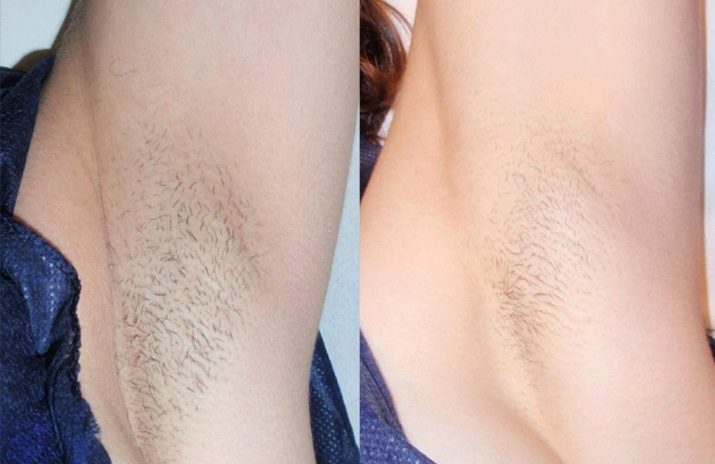What is photoepilation and how is it done?
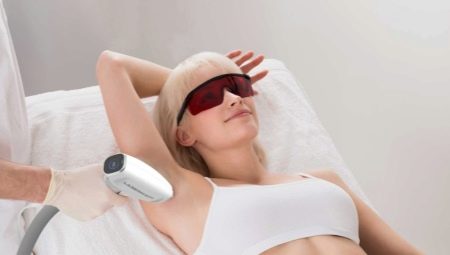
Nowadays, there are many beauty procedures that allow girls to look well-groomed and attractive. One of these procedures is photoepilation. At the moment, many large salons and experienced craftsmen offer this service. In this article, we will find out what photoepilation is, and also figure out how to do it correctly.
What is it and how does it work?
Before delving into all the features of photoepilation, it makes sense to understand what it is. So, photoepilation is one of the methods to effectively remove unwanted hair using high pulse light. The technique itself is based on the fact that the hair pigment melanin, which is located directly in the shaft and follicle, can absorb light waves. Under the influence of heat waves, the blood in the capillaries feeding the bulb coagulates. Because of this, the hair follicle ceases to receive the nutrients it needs, and then dies altogether. As a result, hair falls out.
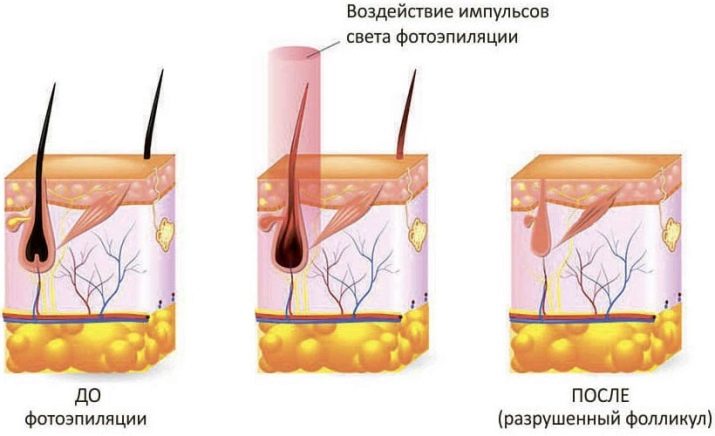
Today photoepilation is one of the most effective methods in the fight against unwanted body hair. True, the number of such procedures is always calculated strictly individually. Based on which zone you need to work on, it takes 3 to 10 trips to the salon.
The popularity of the method under consideration lies in the fact that it allows you to say goodbye to annoying body hairs for a long time. If the procedure was carried out correctly, then a positive result, as a rule, is enough for a period of 1 to 3 months. After a specified period of time, new hairs grow very slowly. They usually become thinner and softer.
It is worth noting that the principle of photoepilation and laser hair removal is in many ways similar. However, there are certain differences. For example, it is believed that the effectiveness of photoepilation is lower by 26%. Also, this procedure differs from a laser in that it affects only dark hairs and only light skin.
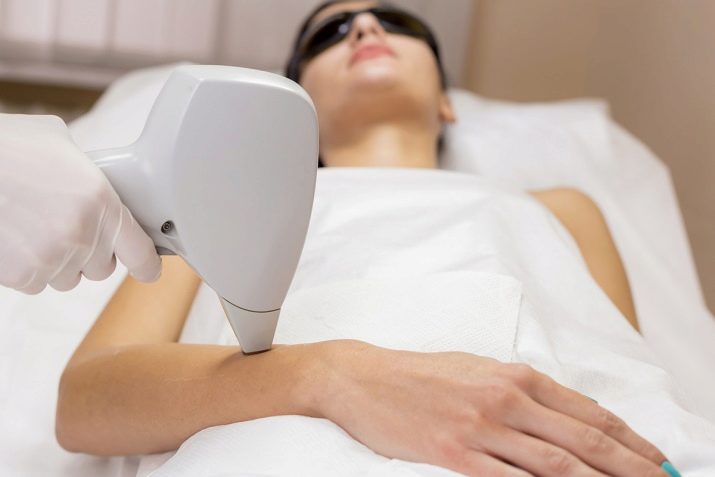
Indications and contraindications
Photoepilation, like any other beauty procedure, has certain indications and contraindications. Both the first and the second must be taken into account, wishing to get rid of body hairs without negative consequences.
The photoepilation procedure itself is indicated if a girl wants to get rid of unwanted hair on her body. In this case, it is very important to take into account the entire list of contraindications. We will find out under what circumstances it is worth postponing or completely abandoning the photoepilation service.
- It is not allowed to apply to photoepilation in areas where other methods have already been used. We are talking, for example, about shugaring or waxing hair removal.
- If there are scratches (even the smallest) or other defects at the treatment site, then the procedure should be abandoned. The same applies to those areas where certain inflammatory processes take place.
- If there are any skin diseases or allergic reactions, then it is better to refuse the photoepilation procedure.
- It is not recommended to use such a service if there is a tattoo at the place of processing.
- If a person has been taking drugs that increase sensitivity to light for a long time, then photoepilation will also be contraindicated.
- You can not apply to this procedure for pregnant girls.
- Pregnancy is not the only prohibition. Feeding time is also a contraindication.
- If any electrical devices are present in the human body, then photoepilation is strictly prohibited.
- An active herpes virus is also a contraindication.
- Also, it is not allowed to resort to photoepilation if there are large moles and other neoplasms on the skin.
- If a person suffers from diseases of the cardiovascular system, the procedure in question can cause serious harm. You can’t carry it out.
- Violation of the hormonal background is also a contraindication to photoepilation.
- Photoepilation is strictly prohibited for any cancer, as well as for varicose veins.
- In a state of alcoholic intoxication, the beauty procedure in question is also prohibited.
- It is better for children and adolescents to refuse photoepilation.
Many girls who decide to manage unwanted hairs in this way are interested in the question of whether it is possible to use the photoepilation service for menstruation. It is worth knowing that "women's days" are not a strict contraindication. However, one cannot but take into account the fact that it is during this period that the pain threshold is noticeably reduced, which is why during the procedure one may encounter certain unpleasant sensations. It is recommended to postpone the session for 5-6 days of the cycle.

If a woman tolerates such manipulations without problems, then there can be no restrictions at all. The only exception is the bikini area.
Comparison with laser hair removal
It has already been said above that photoepilation and laser hair removal are very similar, but still different procedures. Let's compare them in more detail in order to understand what exactly are the main differences.
- Photoepilation is a more "ancient" method in relation to laser hair removal.Based on the results of international studies, the effectiveness of the former turns out to be lower (on average by 20%).
- Photoepilators give out a more powerful flash. On the "road" directly to the hair follicle, it also has time to affect the skin pigment and blood vessels. As for the laser beam, it is more selective. Therefore, laser devices are much more expensive.
- As mentioned earlier, photo epilation has an effect on dark hair and light skin. People with dark skin, blondes can get burns. If people do not get burns, then they will simply give money away for a service that is useless for them.
- Due to the parameters of the diffusion of the flash of light against the background of photoepilation, in some situations it becomes necessary to conduct a larger number of sessions. The complex itself may even consist of 10 or more procedures. With laser hair removal, the number of sessions is usually 4-10.
- This type of hair removal is cheaper than the laser version. However, if you take into account a larger number of sessions, the difference in price may not be very noticeable.
- A laser hair removal session takes much longer than removing unwanted vegetation through photoepilation. This is due to the fact that the action of the laser extends to a smaller area of the skin.
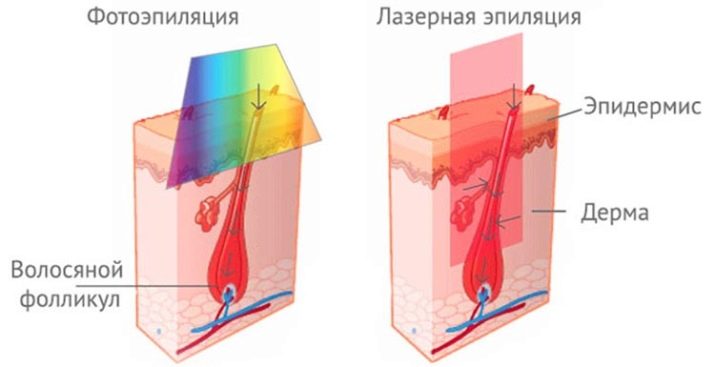
Overview of procedure types
Photoepilation is a cosmetic procedure that comes in several different types. Each of them provides for its own scheme of actions and the processing of certain areas. Let's find out more about the different types of photoepilation.
ELOS epilation
ELOS epilation is an effective hair removal method that includes 2 main activities. We are talking about radio frequencies, as well as the energy of a light pulse. ELOS epilation and just photo epilation are not identical concepts, but they overlap.
Usually, only the level of effectiveness of radiation with radio frequencies for heating hairs remains in question.
This method brings girls unpleasant sensations, and the effectiveness remains at the level of simple photoepilation. In addition, there is a risk of getting burns on dark skin.
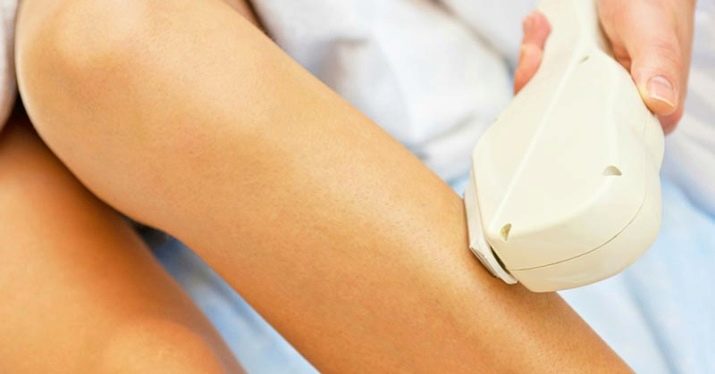
IPL
There is another type of hair removal - IPL. The main advantage of this method is that unwanted hair can be removed for a long time. The skin after the procedure remains smooth, there are no blackheads or scars on it. Another plus of IPL photoepilation lies in the absence of discomfort.
It should be borne in mind that with the considered epilation it is impossible to remove old and gray hairs, if any. This is due to the fact that there is no pigment in them, so the beam cannot affect them.
IPL hair removal is considered the safest. This is an innovative cosmetic procedure that can be applied to any area on the body. The technique itself is painless. In IPL systems, a flash lamp acts as a light source, generating high-intensity incoherent light emission. The wavelength is in the range of 500-1200 nm.
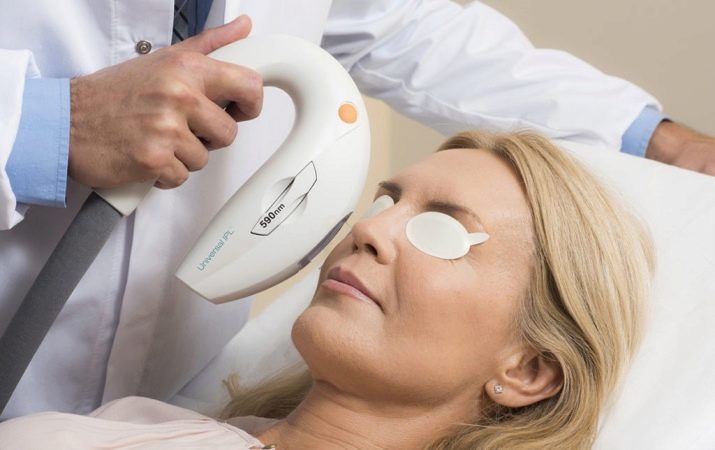
LHE
LHE is an epilation that combines heat and light at the same time. Due to this, the hairs can be warmed up not only by light, but also by heat. The wave of light is scattered and the temperature values in the treatment area increase. A special combination of inert gases is used.
With this method, there is no risk of burns. The hairs are not removed permanently, but their number is noticeably reduced. The procedure helps to slow down the growth of new hairs.
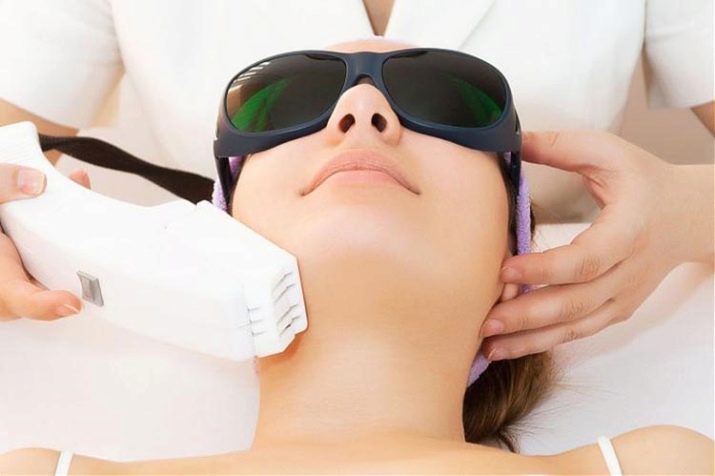
AFT
This method involves the use of motorized luminescent technology. This technique uses filters. They can neutralize a certain part of the spectrum. It transforms into colo-infrared radiation, which cannot cause any harm to the skin.The risk of burns is very low.
The use of AFT technology makes it possible to get away from the highest energy indicators. Here, only small doses are used, but the effect of the impulses itself is increased. The implementation of therapy using Israeli devices with the In-Motion option makes the entire procedure faster and more comfortable.
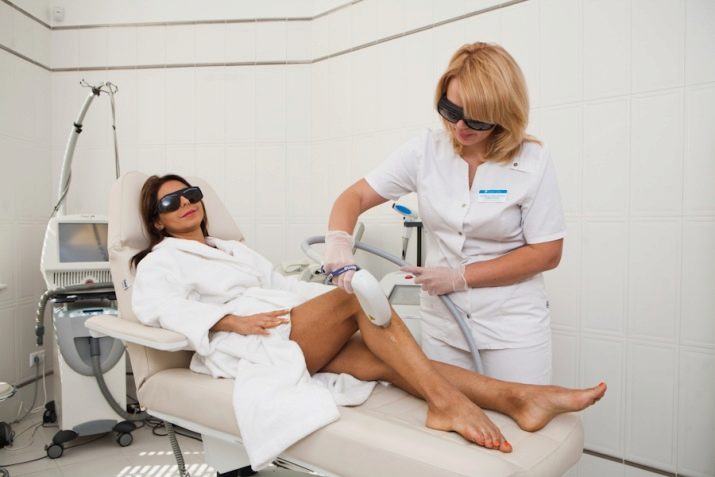
Fundamental rules
It does not play a special role which zone you want to get rid of unwanted vegetation. We can talk about hairs on the legs, in the intimate area, in the armpits or arms. In any case, it is very important to follow a few basic rules of photoepilation. Let's get acquainted with them.
- It is recommended to apply to the photoepilation procedure only from a certain age. You should not remove unwanted hair in this way if the girl is under 18 years old.
- To effectively remove unnecessary hair in a particular area, you need to know exactly how many sessions will be needed for this. Most often, the course of photoepilation consists of 9-10 procedures. Between them it is necessary to maintain an interval of 2 to 8 weeks. It all depends on how long it takes for the hair follicle to fully mature.
- If not a salon, but a home photoepilator is used for hair removal, then it is recommended to operate it at the initial stages 1 time in 3-7 days. A similar course can be continued for 3 months. After that, only corrective measures will be needed from 1 time in six months. You should not use the epilator more than 1 time in 3 days, as it will be too often.
- Before the immediate procedure, you must properly prepare. Without competent preparation, it will not be possible to achieve the desired results, but it is quite possible to face negative consequences.
- After receiving the service in the salon, girls and women should definitely pay due attention to rehabilitation care measures.
If you follow these simple rules, then photoepilation will be not only effective, but also absolutely safe.
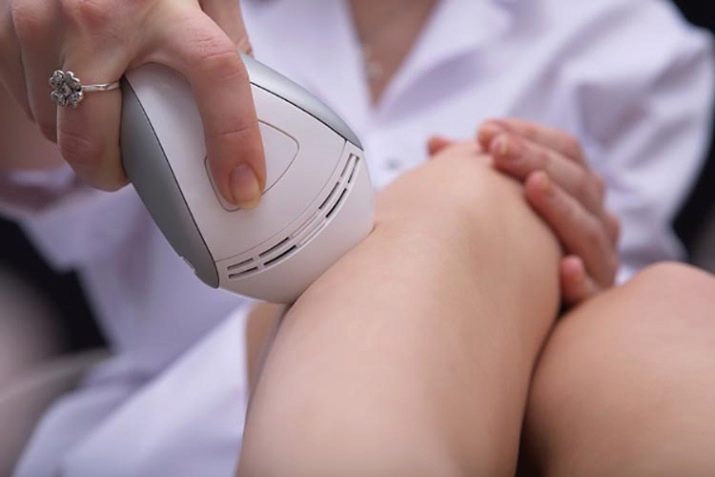
Preparation
As mentioned above, competent preparation for the photoepilation procedure plays a very important role. Let's consider in detail exactly how to prepare for this method of removing unwanted hair.
- It is necessary to undergo a medical examination in the salon well in advance of the date of the session itself. It is very important to consult a beautician. It is necessary to exclude all possible contraindications to exposure from the side of the world.
- In advance, it is necessary to study the type of skin, as well as the nature of the hairline.
- A month before the procedure in question, you need to resort to a number of preparatory measures. It is necessary to exclude waxing, shugaring. You should also put off your home epilator for a while.
- You should limit sunbathing, as well as visiting the solarium a couple of weeks before the session.
- Hair should not be too long or too short. The ideal length is 1 to 2 mm.
- 2-3 days before receiving the service, the vegetation will need to be carefully removed with a safety razor. Immediately before photoepilation, you will need to take a shower, without using any cosmetics. The surface of the skin must be perfectly clean and dry.
- Before the very first session, it is recommended to conduct a small test on a very small area of the skin. Thus, it will be possible to determine the level of light perception, as well as to ensure the presence or absence of responses.
Immediately before starting the procedure, such preparatory measures will be needed.
- It is necessary to effectively protect the retina from the negative effects of light flashes. The client must wear special safety glasses.
- The next step is to apply a special gel to the skin: both cooling and moisturizing at the same time.In addition, the gel contributes to the most correct distribution of light fluxes, prevents burns.
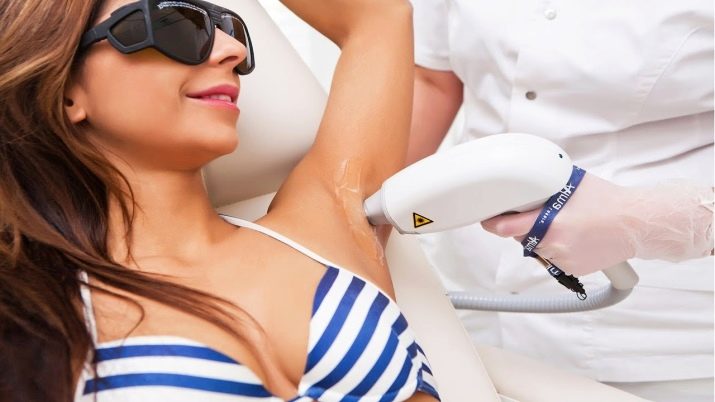
Technology
Let's understand the features of the photoepilation technology.
- When the client is completely ready for the procedure, the specialist sets up the equipment. It should work properly.
- Then the apparatus is brought to the surface of the skin by the working area. The next step is to carry out a light flash by pressing a button.
- The photoepilator is gradually moved, thus carrying out the treatment of the entire epilated area.
- When the treatment of the required area is completed, be sure to carefully remove all residues of the gel. At the end of the entire procedure, the master applies a high-quality soothing cream to the client's skin.
If the master does everything correctly, then the procedure is easy and painless. Of course, much also depends on whether the woman has given due attention to the necessary training.
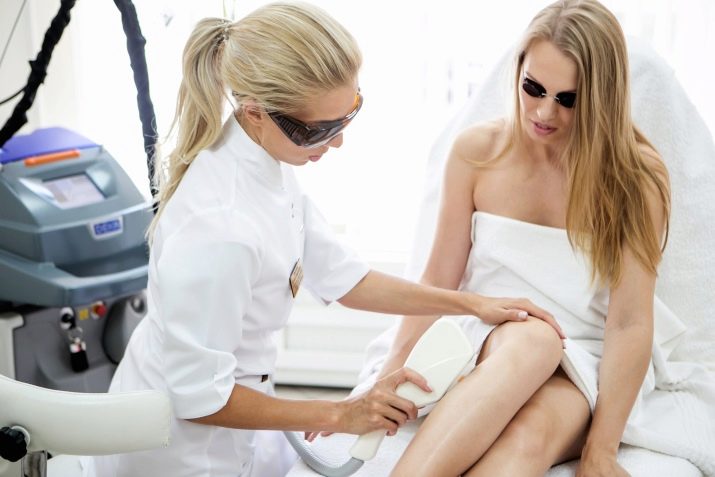
Follow-up care
After completing the photoepilation procedure, the girl must take proper care of the treated area. Consider which care measures will be the most effective and useful.
- For a week after the procedure, it is strongly not recommended to stay in the sun for a long time. You should not resort to massage either.
- After completing the procedure, you can apply makeup. It will not be harmful to your health.
- For the first 7 days, you should not visit the bathhouse, sauna or solarium (you can not sunbathe under any circumstances).
- It is not recommended to take a hot bath in the early days. Better - a cool shower.
- In the intervals between the courses of photoepilation, in no case should you use any other means for epilation.
- It is forbidden to apply any cosmetic products containing alcohol on the skin that has been treated with the epilator.
- On sunny days, it is highly recommended to use quality sunscreen.
- At first, the skin will be too dry, so it makes sense to drink as much water as possible. It is desirable that its volume be at least 1.5 liters per day.

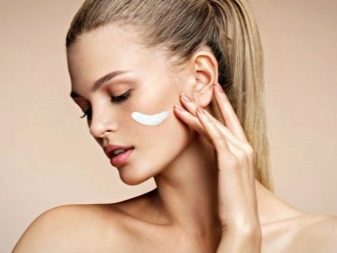
Possible complications
Having understood all the features of photoepilation, it makes sense to learn about the complications and negative consequences it can lead to.
- There is a risk of acne on the skin. This effect most often occurs if people who by nature have dark skin turn to the procedure. The consequence is very unpleasant, but in most cases this problem goes away within a few weeks.
- Ugly scars may remain. Basically, their appearance is caused by improper hardware setup. If the calculations of the impulse activity are incorrect, the risk of scarring increases significantly.
- In some cases, the photoepilation procedure leads to hyperhidrosis (destruction of the sweat glands).
- Oddly enough, but photoepilation can provoke hair growth. If you choose too low an irradiation power, the roots will not collapse. In this case, on the contrary, their active growth will be stimulated.
Papillomas and other similar formations after photoepilation appear in rare cases. To some extent, this is due to the fact that the client did not tell the master everything about his health in advance.

Review overview
Women leave different reviews about the photoepilation service. Let's find out what good ladies say about this procedure:
- most of the girls appreciated the excellent effect of epilation;
- many people liked the fact that the hair after that becomes much softer;
- the fact that the effect lasts for a long time delighted many ladies;
- On the positive side, a short procedure time was also noted;
- the girls were satisfied that the procedure was painless;
- the girls liked that after photoepilation they did not face the problem of ingrown hairs;
- the relatively inexpensive cost of services also pleasantly surprised the ladies.
Most of the satisfied girls "fell into the hands" of good and experienced craftsmen, so they did not face negative consequences and symptoms.
Find out what disappointed women in photoepilation:
- some did not find a single plus for themselves, noting the painful sensations and the weak effect of the procedure;
- many girls did not like the fact that after hair removal there are many prohibitions;
- the fact that many procedures are required did not suit a large number of women;
- many ladies consider this procedure dangerous, since its effect on the human body has not yet been fully studied;
- some women have experienced allergic reactions to the gel used for photoepilation;
- there were girls who, on the contrary, were not satisfied with the cost of the service;
- in some reviews, women talk about getting burns.
